Gardening is more than just a hobby; it’s a journey filled with patience, perseverance, and the thrill of watching life bloom. Have you ever stood in your garden, soaking in the vibrant bursts of color as you witness a plant’s metamorphosis from seed to a stunning tapestry of foliage? Candy Corn Spirea embodies this thrill with its delightful hues and low-maintenance appeal. This remarkable shrub not only brings beauty to your outdoor space but also serves as a testament to the rewards of nurturing living things. If you’re looking for a touch of vibrant color in your garden, Candy Corn Spirea plant care is a fulfilling pursuit, one that promises not just aesthetic beauty, but also a peaceful connection to the natural world. Embark with us in this guide to unveil thriving tips that will help you cultivate your own piece of green magic.
Key Takeaways
- Candy Corn Spirea offers vibrant colors and is easy to maintain.
- Understanding its characteristics is essential for successful spirea gardening.
- Proper planting conditions significantly influence growth and health.
- Watering strategies play a vital role in plant care.
- Regular pruning and fertilizing enhance the beauty of Candy Corn Spirea.
- Being aware of pests and diseases is critical for plant health.
What is Candy Corn Spirea?
Candy Corn Spirea, scientifically known as Spiraea japonica ‘NCSX1’, is a remarkable shrub that brings vibrant color to any garden. This plant stands out due to its unique, multi-colored foliage and delightful blooms that capture the attention of gardeners and pollinators alike. The following sections explore its characteristics, ideal growing zones, and reasons to choose this stunning variety.
Characteristics of Candy Corn Spirea
The candy corn spirea characteristics are truly eye-catching, starting with its springtime transformation. The leaves emerge in a bright red hue, which gradually transitions to a striking pineapple yellow and warm orange as the seasons progress. In addition to its colorful foliage, dark purple flowers bloom from late spring through early summer, providing a vital food source for butterflies and bees. Its adaptability and aesthetic appeal make it a favorite among garden enthusiasts.
Ideal Growing Zones
This versatile plant thrives in USDA zones 4-8, making it suitable for a wide range of climates. Gardeners can successfully cultivate this shrub across various locales, whether you’re in the north or the south. Its hardiness contributes to its reputation as the best candy corn spirea variety, perfect for enhancing landscapes with minimal effort.
Why Choose Candy Corn Spirea?
There are several compelling reasons to consider adding candy corn spirea to your garden. This low-maintenance, hardy shrub offers vibrant colors throughout the growing season, enhancing the beauty of borders or mass plantings. Its ability to attract pollinators is an added benefit, promoting a healthy garden ecosystem. If you seek a plant that combines all these factors, candy corn spirea fits the bill perfectly.
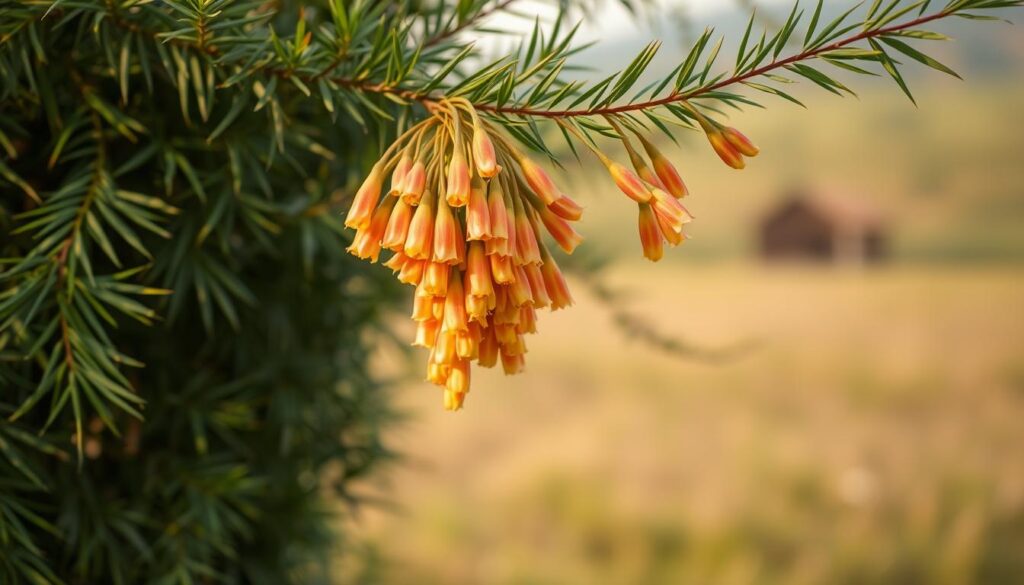
Planting Candy Corn Spirea
Successfully planting candy corn spirea requires attention to timing, location, and soil quality. Ensuring the right conditions will enhance the health and beauty of your plants.
Best Time to Plant
The ideal months for planting candy corn spirea are March, April, October, or November. During these times, the weather is favorable for root establishment, allowing your spirea to thrive.
Selecting the Right Location
When planning for planting candy corn spirea, choose a spot that receives full sun to partial shade. A well-drained location is critical to prevent root rot, which can be detrimental to your plants.
Soil Requirements
Understanding candy corn spirea soil requirements is key to promoting healthy growth. Aim for loamy soil enriched with organic matter, which will help retain moisture while allowing for proper drainage. If your garden has sandy patches, consider mixing in compost to enhance the soil structure, creating ideal conditions for your new plants.
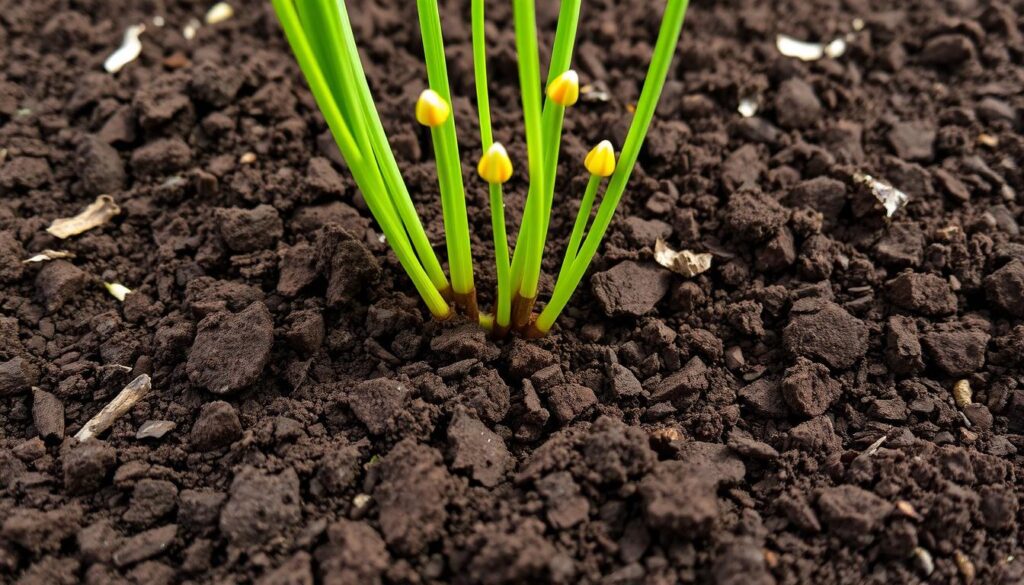
Watering Tips for Candy Corn Spirea
Maintaining moisture in candy corn spirea is essential for its overall health. This plant thrives when you provide it with consistent moisture throughout its growing season. Regular watering ensures vibrant blooms and robust foliage, making your garden eye-catching.
Importance of Consistent Moisture
Consistent moisture levels prevent stress in candy corn spirea. Water your plants every 1-2 weeks, adjusting according to weather conditions. Rainy days may allow for longer intervals, while hot, dry spells may require more frequent watering. Monitoring moisture levels helps create an ideal environment for growth and recovery.
Signs of Overwatering
Be vigilant for signs of overwatering, which include yellowing leaves and wilting despite soggy soil. Root rot is a serious concern that can result from excess moisture. To avoid these issues, ensure proper drainage and always check the soil before watering.
When to Water
The best time to water is in the early morning or late afternoon when temperatures are cooler. This practice minimizes evaporation and allows the plant to hydrate effectively. Always check the top two inches of soil for dryness; if it’s dry, it’s time to water your candy corn spirea.
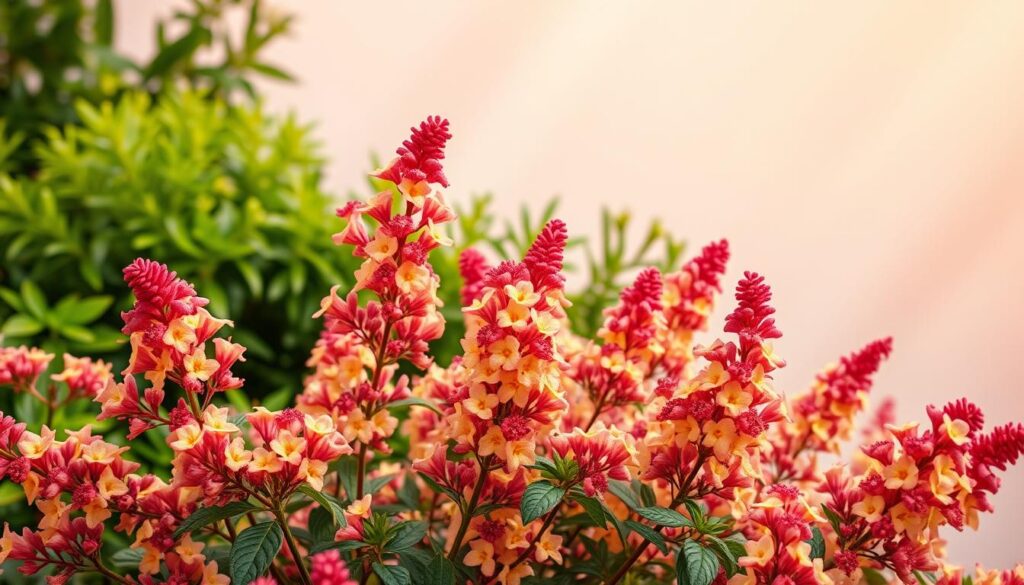
Sunlight Needs of Candy Corn Spirea
Candy Corn Spirea flourishes best when it receives proper sunlight for spirea. This plant thrives in full sun, which means it requires a minimum of six hours of direct sunlight each day. By ensuring optimal light conditions, you promote vibrant blooms and a robust growth pattern. If you find your plant lacking in these conditions, it might resort to leggy growth and fewer flowers, diminishing its overall aesthetic appeal.
Ideal Sunlight Conditions
To meet candy corn spirea sunlight needs effectively, aim for locations that provide full sun exposure. Such conditions not only enhance flowering but also contribute to the plant’s healthy structure. A sunny garden bed or an area receiving direct sunlight through the day will work wonders for your spirea. Regular monitoring of sunlight exposure will guide you in maintaining these ideal conditions.
Effects of Too Much Shade
Too much shade can significantly impede the growth of candy corn spirea. Insufficient sunlight may lead to stunted growth and an overall decline in health. When grown in shady areas, the plant struggles to photosynthesize effectively, resulting in a lack of blooms and ultimately affecting its vitality. It’s essential to be vigilant about ensuring adequate exposure.
Adjusting for Local Climate
Adjusting for local climate is crucial for the success of your candy corn spirea. Variations in weather patterns impact sunlight availability. For example, regions with prolonged cloudy seasons may require additional considerations for placement and care. Assess local climate factors, such as temperature and seasonal sunlight, to guarantee your spirea gets the adequate light it needs without suffering from heat stress during hot summers.
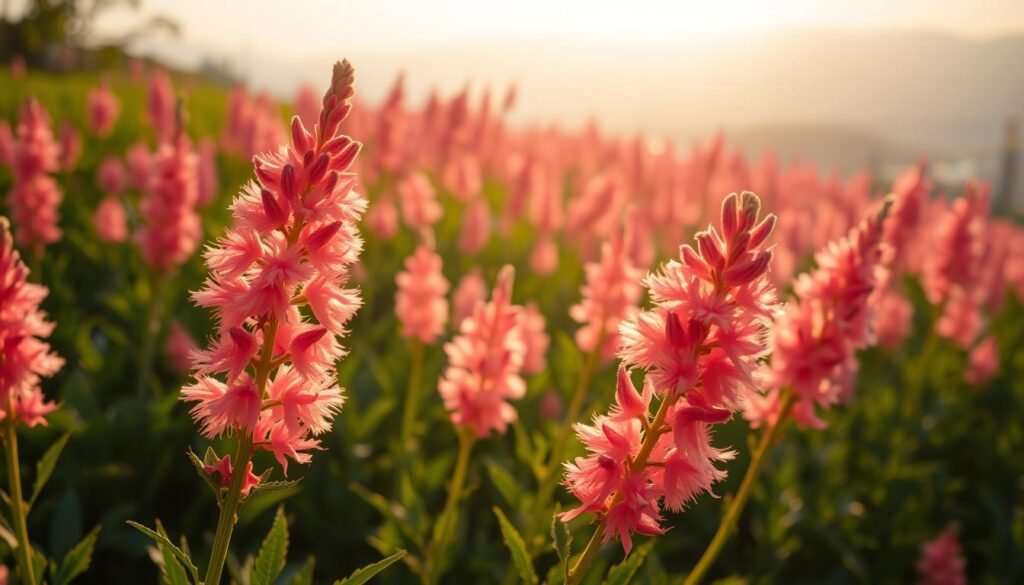
Fertilizing Candy Corn Spirea
The health of your Candy Corn Spirea largely depends on proper fertilization. Choosing the best fertilizers for spirea can enhance growth and blooming. A balanced NPK fertilizer is highly recommended for consistent nourishment.
Recommended Fertilizers
For optimal growth, you should use a balanced NPK fertilizer with equal ratios of nitrogen, phosphorus, and potassium. Organic options like compost or well-rotted manure work well, too. These fertilizers ensure your Candy Corn Spirea thrives in its environment, providing essential nutrients throughout the growing season.
Application Frequency
Begin fertilizing candy corn spirea in early spring, just after the last frost. An annual application suffices for many circumstances. If you notice slow growth during the summer, a supplemental feeding can give extra support to your plants, encouraging robust development.
Signs of Nutrient Deficiency
Be vigilant for signs of nutrient deficiency in your spirea. For instance, yellowing of older leaves typically indicates a nitrogen shortage, while browning at the leaf edges could signal potassium deficiency. Stunted growth may also suggest an overall lack of nutrients in the soil. Regularly checking for these signs allows you to adjust your fertilizing strategy effectively.
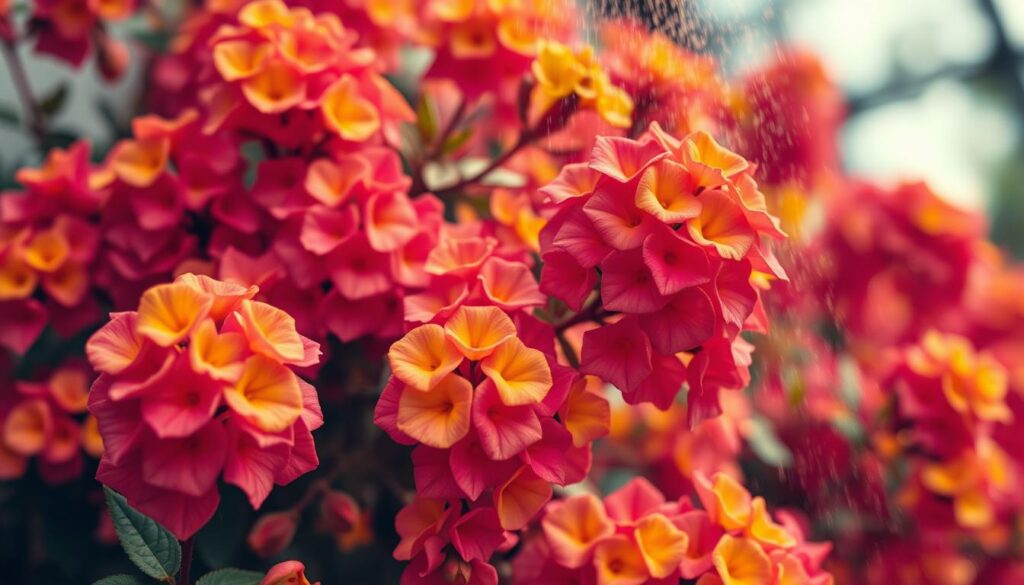
Pruning Your Candy Corn Spirea
Proper pruning is essential for keeping your candy corn spirea healthy and vibrant. Understanding when to prune spirea and employing the right techniques can enhance growth and flowering. Here’s what you need to know.
When to Prune
The best time for candy corn spirea pruning is in late winter or early spring, just before new growth begins. This timing allows the plant to recover quickly from the pruning process and promotes vigorous blooming during the growing season.
Tools You’ll Need
Having the right tools makes the task easier and more effective. For spirea pruning, gather:
- Sharp, clean pruning shears
- Loppers for thicker stems
- Gloves to protect your hands
Pruning Techniques
Utilize proper pruning techniques for spirea to achieve the best results. Trim away any damaged or dead branches first. For older or leggy plants, consider cutting back about one-third of their stems. This encourages bushier growth and healthy foliage, enhancing the overall appearance of your candy corn spirea.

Pests and Diseases
It’s essential to monitor your Candy Corn Spirea for potential threats from pests and diseases in spirea. Being proactive will ensure your plant remains healthy and vibrant. Common pests such as aphids, spider mites, and scale insects can wreak havoc on your beloved spirea plants. Understanding how to identify these candy corn spirea pests can help you catch issues early.
Common Pests to Watch For
Aphids are tiny, soft-bodied insects that can cluster on new growth, sucking juices and weakening the plant. Spider mites produce fine webbing on leaves, which is a clear indicator of their presence. Scale insects appear as small, raised bumps on stems and leaves. Regular inspections can assist in the timely detection of these pests.
Disease Symptoms and Prevention
While diseases affecting candy corn spirea are less frequent, they can lead to significant issues if not addressed. Signs of trouble include wilting leaves, discoloration, and unusual growth patterns. To prevent these problems, maintaining proper care and tailored preventative measures is key. Regular watering and monitoring for moisture-related issues will help keep your plant thriving.
Treatment Options
Treating spirea diseases often involves a combination of organic pest control and diligent monitoring. Utilizing neem oil can effectively help manage pest infestations without harming beneficial insects in your garden. If you notice disease symptoms, promptly remove affected leaves and consider applying a fungicide as a last resort. Sticking with organic treatments not only boosts plant health but protects the environment.
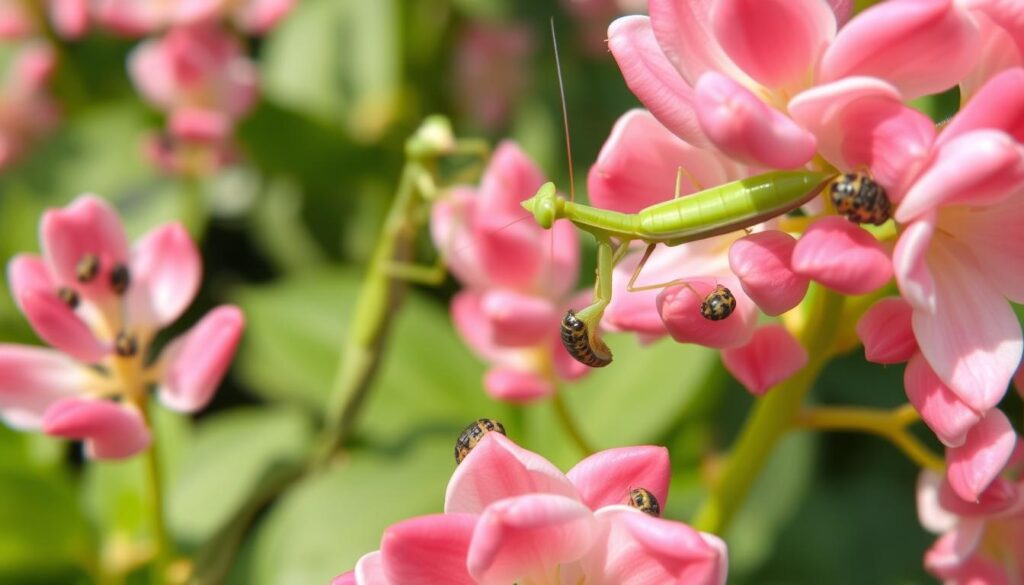
| Pest/Disease | Symptoms | Treatment | Prevention |
|---|---|---|---|
| Aphids | Tiny insects, sticky residue on leaves | Neem oil treatment | Regular inspections and promoting natural predators |
| Spider Mites | Fine webbing, stippling on leaves | Insecticidal soap or neem oil | Maintain humidity around plants |
| Scale Insects | Raised bumps on stems and leaves | Manual removal, neem oil | Good air circulation and regular inspections |
| Wilting/Discoloration | General decline in plant health | Remove affected leaves, fungicide if needed | Proper watering and air circulation |
Mulching Around Candy Corn Spirea
Mulching plays a crucial role in enhancing the health and growth of your Candy Corn Spirea. The benefits of mulching spirea are extensive, making it a practice every gardener should consider. It not only helps retain moisture but also regulates soil temperature and suppresses weeds, allowing your plants to thrive in a balanced environment.
Benefits of Mulching
One notable advantage of mulching is its ability to maintain moisture in the soil. This is especially beneficial during dry spells when your spirea requires consistent hydration. Mulch cover can significantly reduce water evaporation, ensuring your Candy Corn Spirea gets what it needs to flourish. Additionally, it aids in regulating soil temperature, providing a stable environment for root development. With proper mulching, you can expect your plants to be healthier and more vibrant.
Best Mulching Materials
When considering materials for mulching around your spirea, choose options that provide excellent moisture retention and nutrient enrichment. Some of the best mulching materials include:
- Wood chips
- Straw
- Shredded bark
These organic materials break down over time, contributing to soil health. Be cautious with the material used, as choosing unsuitable options could impede the growth of your Candy Corn Spirea.
When and How to Mulch
Knowing how to mulch Candy Corn Spirea properly is essential for both novice and experienced gardeners. Aim to apply mulch in late spring after planting or in early fall. This timing allows your plants to reap the benefits as they prepare for winter. Spread a 2-3 inch layer of mulch evenly around the base of the plant. Make sure to keep the material away from the stem to avoid rot, ensuring your spirea remains healthy throughout the seasons.

Winter Care for Candy Corn Spirea
The winter season brings unique challenges for your Candy Corn Spirea, but with proper preparation, you can ensure its survival through the cold months. Implementing winter care for candy corn spirea is essential to maintain its health and beauty in the spring. Understanding how to prepare spirea for winter will help you take effective action to protect your plants against harsh conditions.
Preparing for Cold Weather
Prior to the onset of freezing temperatures, it’s crucial to implement specific steps for preparing spirea for winter. Start by applying a protective layer of mulch around the base of the plant. This will help insulate the roots and retain soil moisture. Sufficient moisture is vital before the ground freezes, so ensure your spirea has enough water before the winter chill sets in.
Winterizing Techniques
Another effective winterizing technique involves trimming back any dead or damaged growth. Doing this in late fall will minimize the risk of wind damage during harsh winter storms. Be gentle when pruning, as excessive cutting can strain the plant. A well-maintained structure will enhance your spirea’s resilience against winter stresses.
Protection Against Frost
Frost protection for spirea can make a significant difference in its overall health. In extreme cold conditions, consider draping burlap over the plants. This extra covering acts as a barrier against deep frost, preventing damage to the foliage. Monitor weather forecasts closely to know when to add this additional protection.

Propagating Candy Corn Spirea
Propagating candy corn spirea is a rewarding endeavor that allows you to expand your garden with minimal cost. Understanding the best methods for spirea propagation is essential for ensuring successful new plants. Two primary methods stand out: cuttings and division. Each approach has its own timing and care techniques to consider.
Best Methods for Propagation
The best methods for spirea propagation involve taking cuttings or dividing existing plants. For cuttings, you should aim to cut stems from healthy, mature plants in late spring. Select stems that are about 4-6 inches long, making sure they have several leaves. Alternatively, division can be done when the plant is dormant, typically in early fall. By separating the root clumps, you create new plants that can flourish in your garden.
Timing for Successful Growth
Successful spirea propagation greatly depends on timing. Late spring is ideal for propagating candy corn spirea through cuttings, as the warmer temperatures encourage root growth. When you choose division, early fall provides the best conditions since the plant will have time to establish itself before winter sets in. This timing ensures that your propagated plants have the best chance to thrive.
Care for New Plants
Caring for propagated spirea requires attention to moisture and light. Newly propagated plants should be placed in a shaded area to protect them from harsh sunlight until they develop strong roots. Consistent moisture is crucial; avoid letting the soil dry out. Maintain this gentle care as it may take several weeks for the cuttings to root and for the divided plants to settle into their new environment.
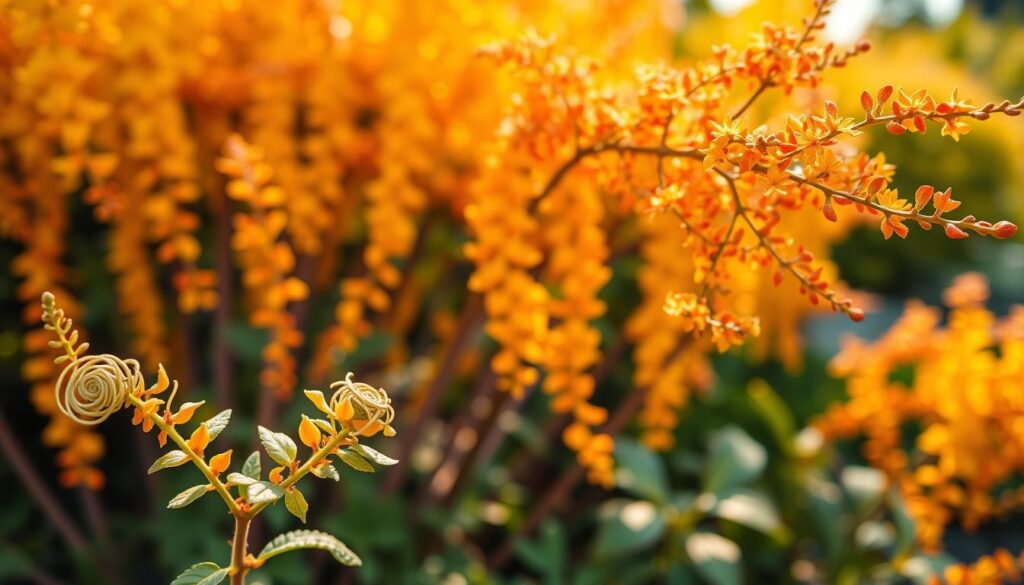
Companion Planting Ideas
Pairing candy corn spirea with compatible plants enhances your garden’s visual appeal and overall health. Companion planting with spirea can create a harmonious ecosystem in your backyard. Select plants that thrive in similar conditions, colorfully complement your spirea, and contribute to a vibrant garden experience.
Plants That Pair Well
Consider adding the following candy corn spirea companion plants to your landscape:
- Daylilies – Their repeated blooms create a lovely contrast.
- Coreopsis – Adds a splash of yellow and blooms through summer.
- Catmint – The purple hues and aromatic leaves enrich the atmosphere.
Creating a Vibrant Garden
A combination of these plants results in a dynamic palette that brightens any space. When employing vibrant garden ideas, focus on varying plant heights and textures. This diversity not only beautifies your garden but also encourages beneficial insects, which can promote healthier plants.
Avoiding Incompatible Plants
Keep in mind to avoid plants that may compete for resources. Refrain from choosing species that are prone to pests or diseases, as these can negatively impact your candy corn spirea. Make careful selections for each area in your garden to maintain a stress-free environment for all your plantings.
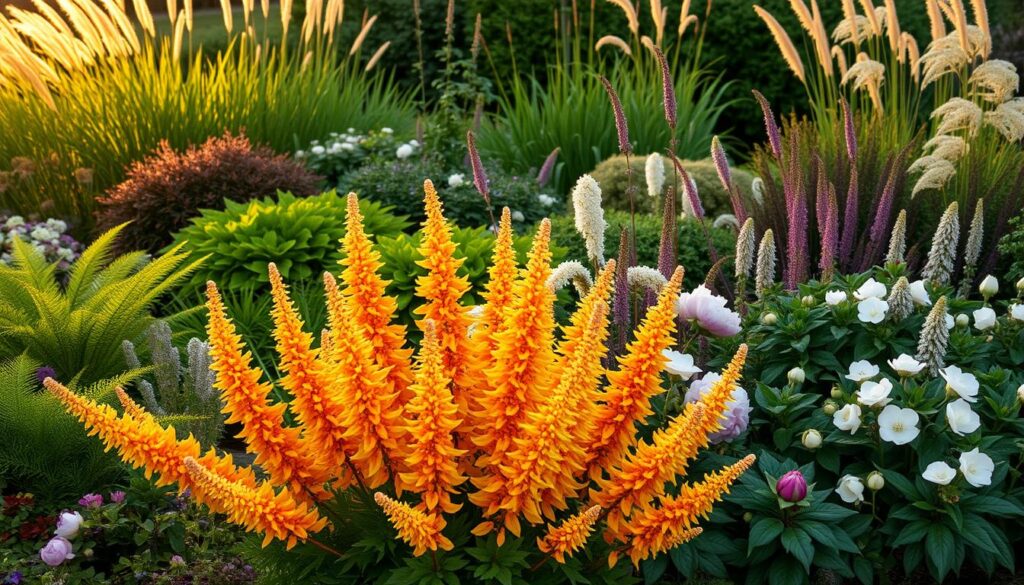
| Companion Plant | Benefits | Considerations |
|---|---|---|
| Daylilies | Beautiful contrast, long bloom period | Requires similar watering needs |
| Coreopsis | Colorful addition, attracts pollinators | Prefers well-drained soil |
| Catmint | Aromatic foliage, vibrant blooms | Can become invasive if not managed |
Common Mistakes to Avoid
Caring for Candy Corn Spirea can be rewarding, yet there are common mistakes with candy corn spirea that can hinder your plant’s health and beauty. It is important to understand these pitfalls to ensure your gardening experience remains positive and fruitful.
Overwatering Issues
One of the frequent challenges in spirea care is overwatering. Ensuring that your Candy Corn Spirea soil is well-drained is essential to prevent root rot and wilting. Pay attention to the moisture level, and establish a consistent watering schedule that allows the soil to dry out between watering sessions.
Planting Too Deep
A common mistake in planting spirea involves placing the plant too deep in the ground. The crown of the plant should sit slightly above ground level. This positioning promotes healthy growth and reduces the risk of moisture issues, which can be detrimental to your spirea’s development.
Ignoring Pruning Needs
Regular pruning plays a vital role in maintaining the shape and health of your Candy Corn Spirea. Neglecting this aspect can lead to overcrowding and weakened plants. Establish a pruning routine to keep your spirea thriving and ensure that it produces abundant blooms.

Conclusion: Your Journey with Candy Corn Spirea
Caring for Candy Corn Spirea offers a wealth of rewards. You will witness the vibrant seasonal transformations that grace your garden while also attracting delightful pollinators. As you cultivate your spirea, you’ll develop valuable gardening skills that enhance not only your landscape but also your overall appreciation for nature’s beauty. The joy of nurturing this plant is just as important as the stunning visuals it provides.
Embracing the beauty of spirea means integrating this lovely shrub into your landscape design. The colorful foliage and charming blossoms can elevate any outdoor space, turning it into a picturesque retreat. As you watch your plants thrive, you’ll discover endless inspiration and a sense of fulfillment that comes from nurturing living things. Each bloom is a testament to your care and effort.
Remember, the encouragement for gardening goes beyond just one type of plant. Starting with Candy Corn Spirea can ignite a passion for creating a lively garden filled with both color and life. So go ahead, take those first steps in your gardening journey, and enjoy the countless benefits that come from caring for your plants.









